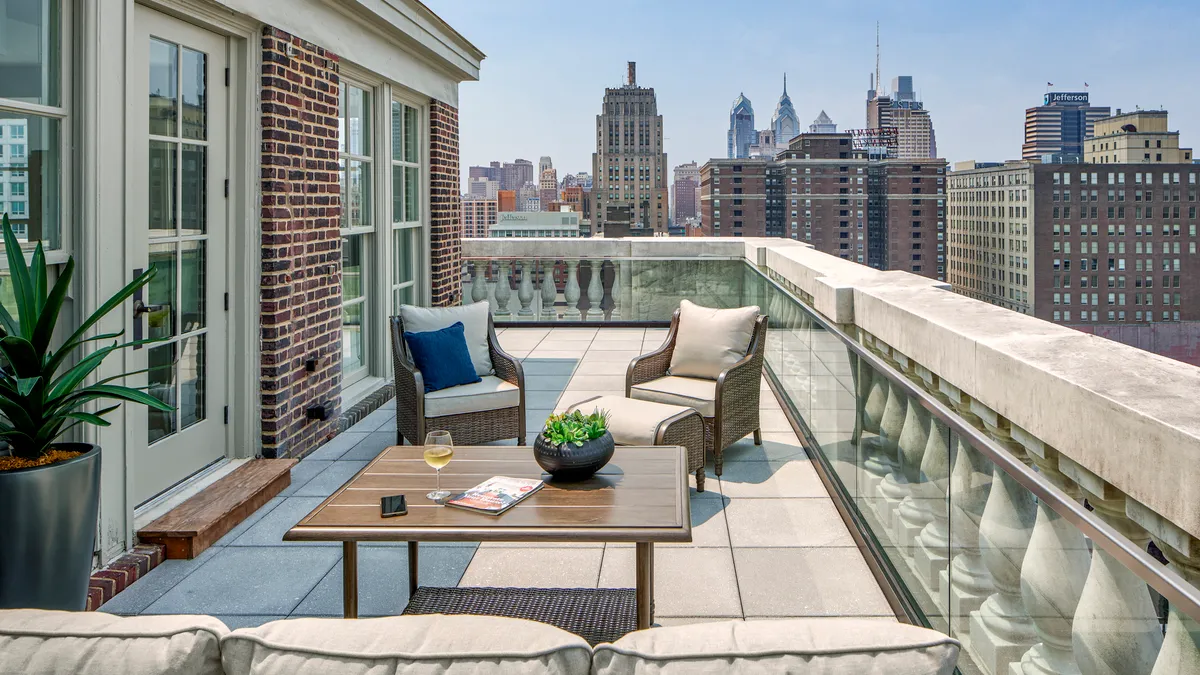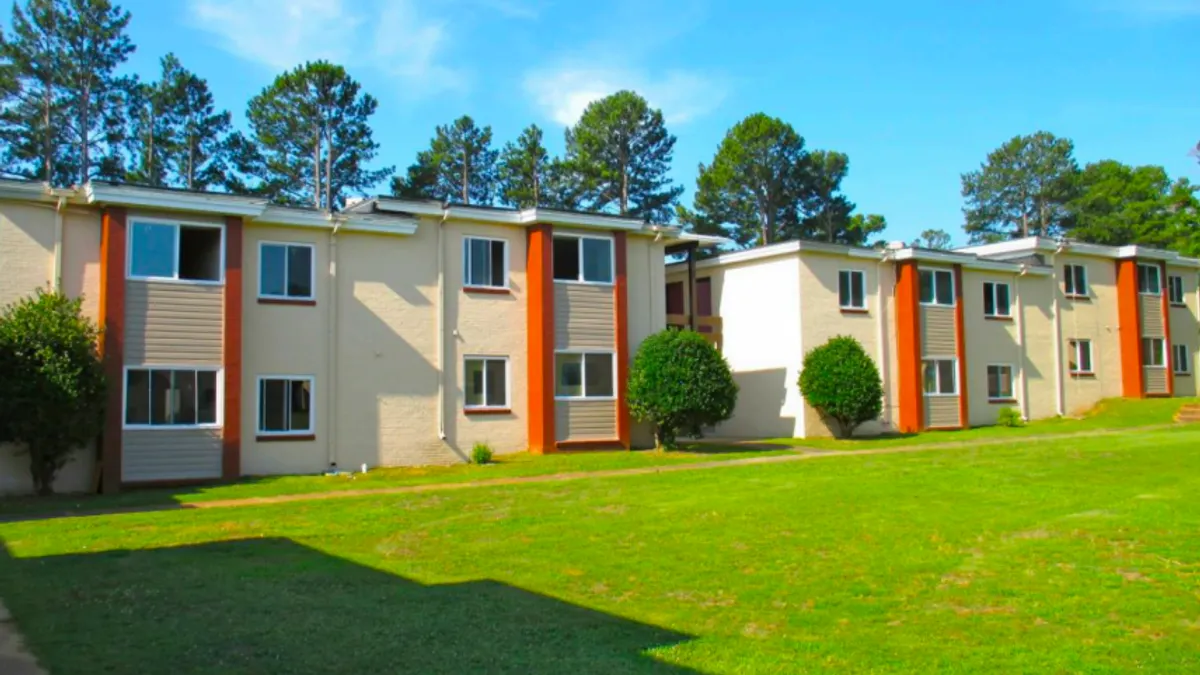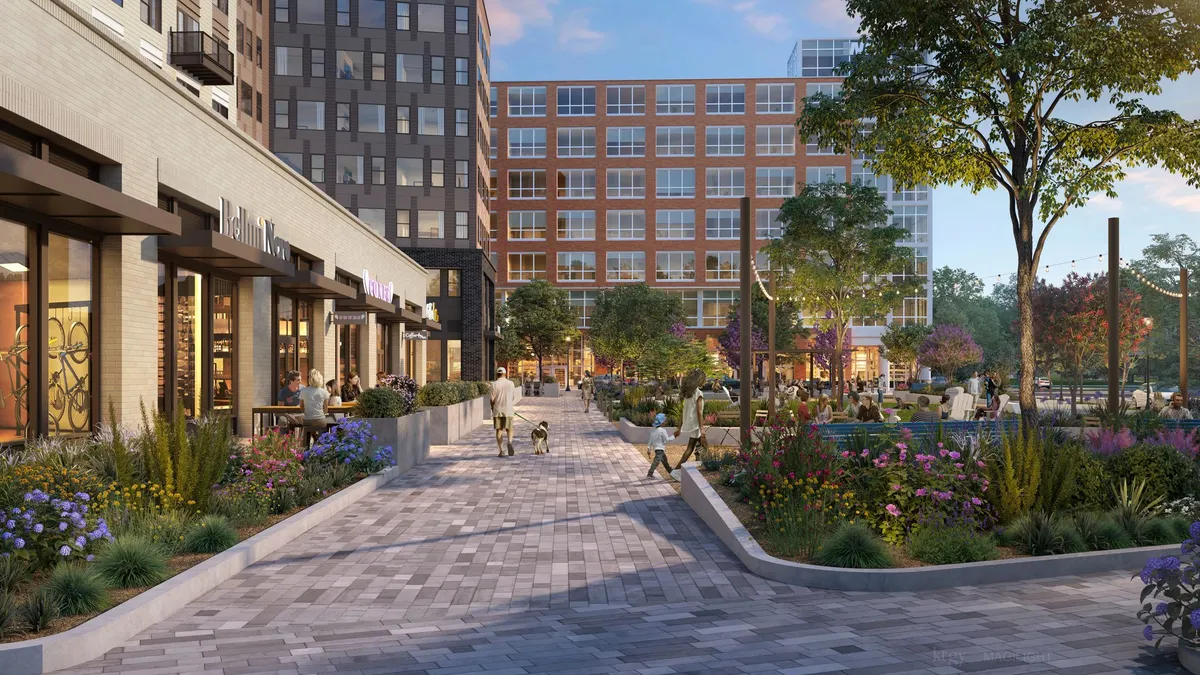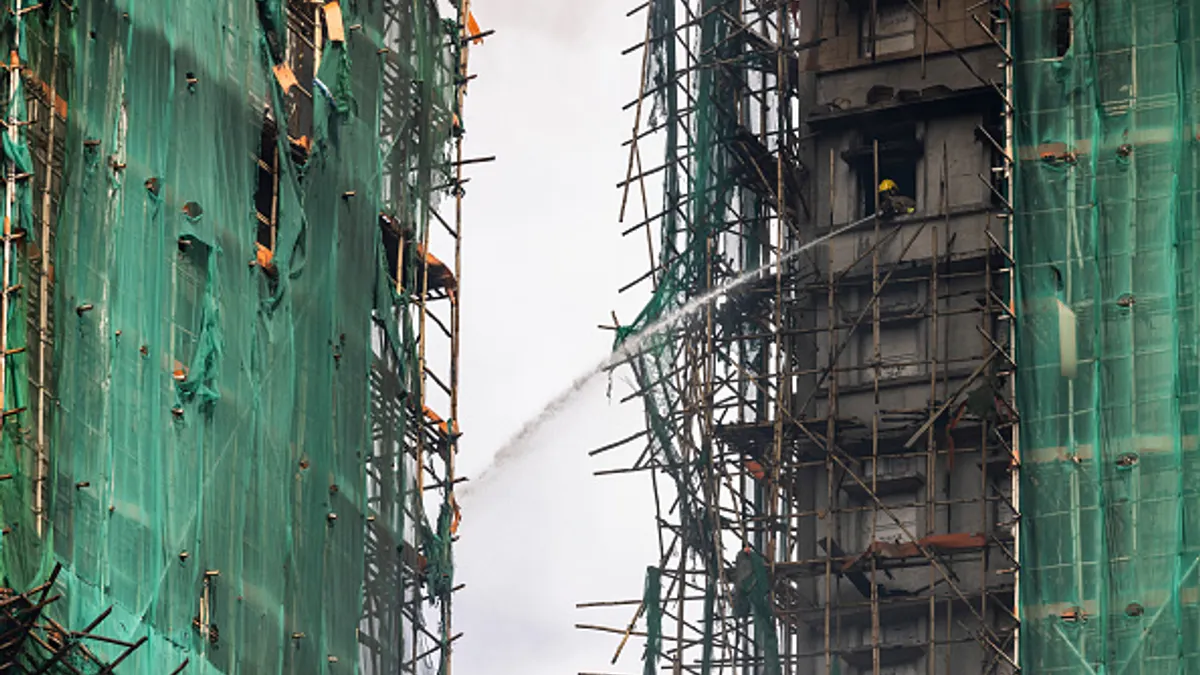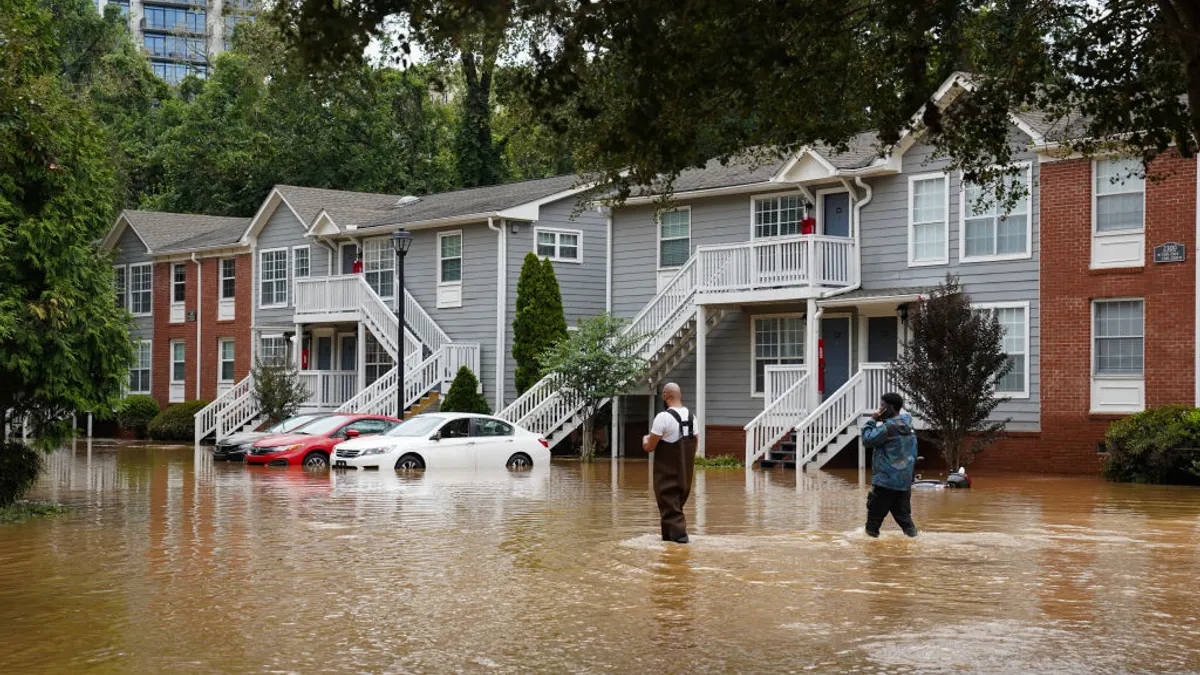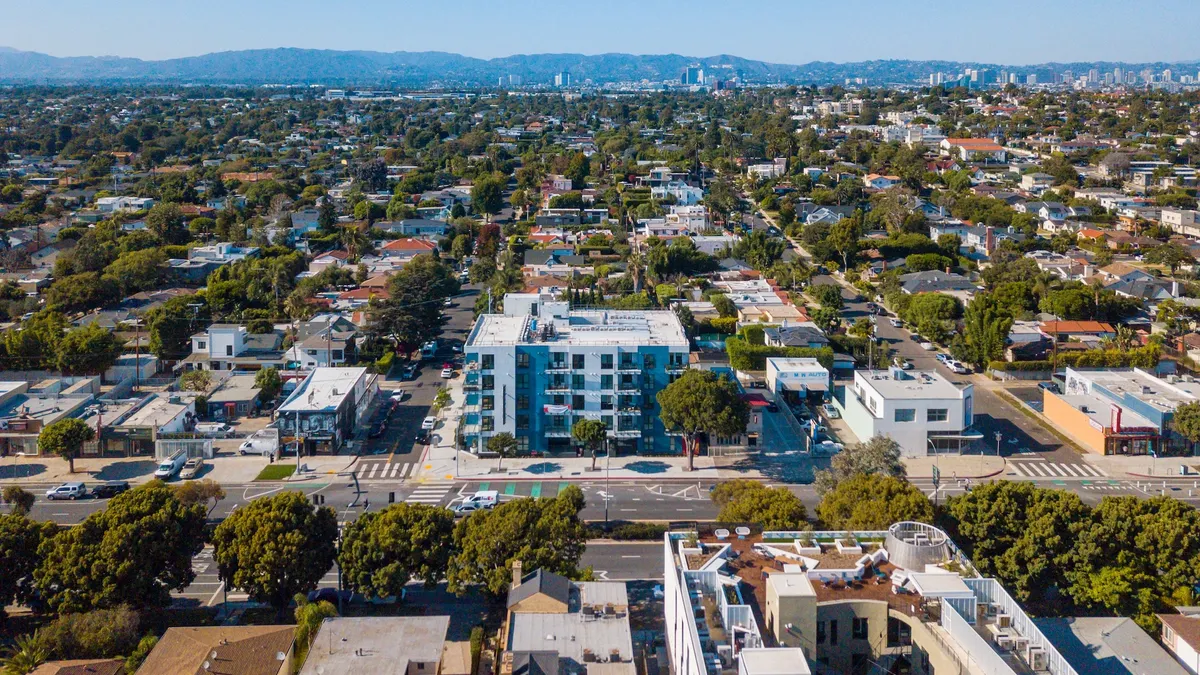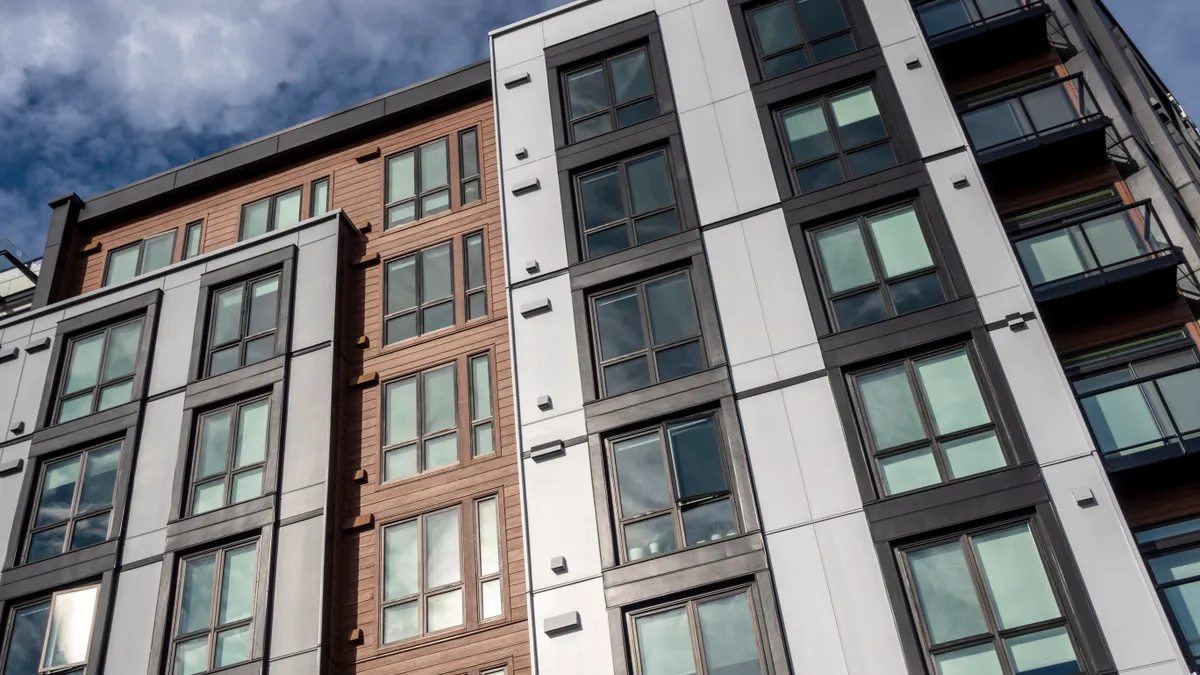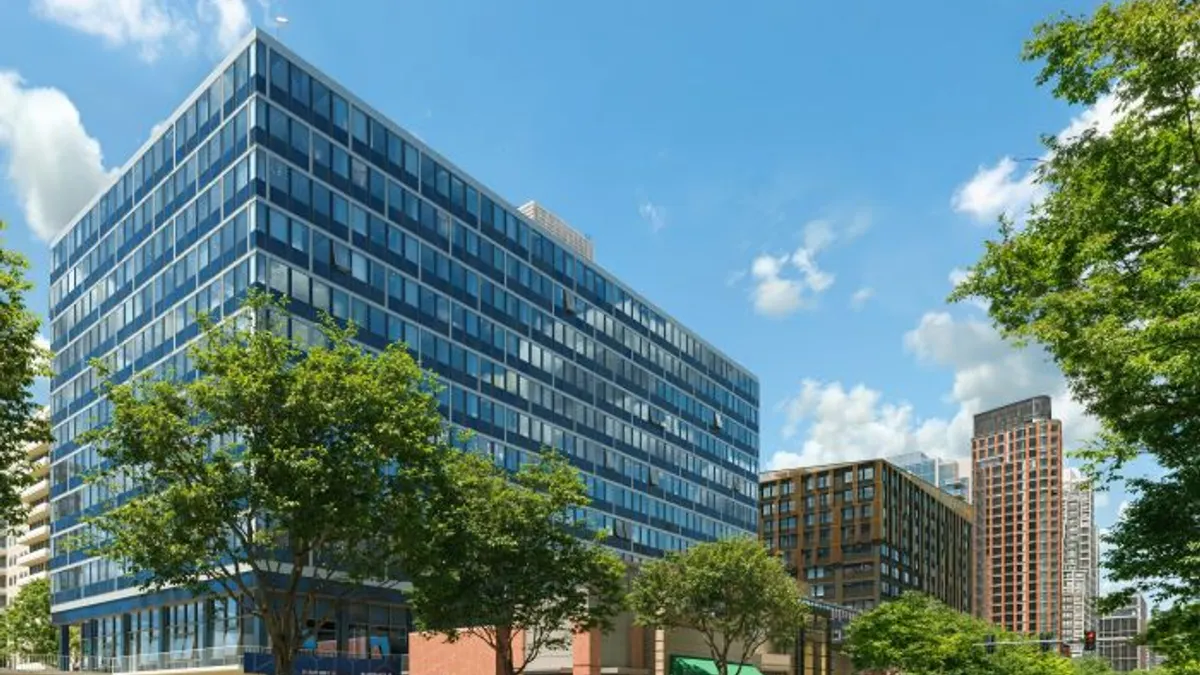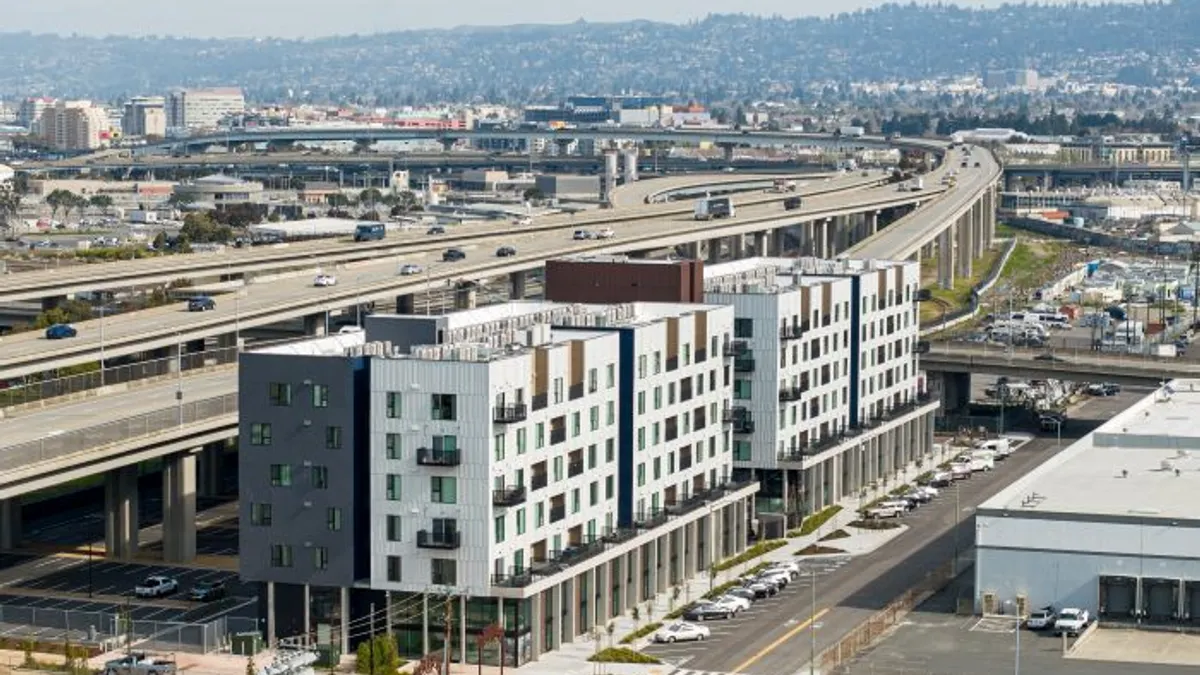As the future looks increasingly murky for a full return to the workplace in many cities, some office owners are exploring different uses for their buildings.
Count office and mixed-use owner Keystone among those companies. The West Conshohocken, Pennsylvania–based firm actually began to look at putting apartments in office buildings before the pandemic. In 2017 and 2021, it added apartments to nine floors at the 12-story, 912,245-square-foot The Curtis Building in Philadelphia, which also contains office and bioscience labs.
The property’s 86-unit luxury residential portion, called The Lyndon at The Curtis, includes an installation of more than 100,000 pieces of colorful Favrile glass in the lobby, a gym with a Fitness On-Demand studio, a yoga room with a dedicated spin area, a private screening room, a golf simulator and a dog spa.
So far, the project has been a success, according to Michael Brookshier, vice president of development at Keystone. “Over the course of three phases of construction, we have been very, very successful in leasing these units for some of the highest rents in the city of Philadelphia,” Brookshier told Multifamily Dive.
The Curtis conversion, which netted apartment rents as high as $12,500 a month, may just be the start for Keystone. The company is currently looking at office-to-residential conversions at three more buildings, and it isn’t alone. A recent report from Toronto-based real estate services firm Avison Young identified 6,206 buildings across 10 U.S. cities that could be converted to multifamily. That is about one-third of older building stock in the largest cities across the U.S. and Canada, according to CoStar.
Here, Brookshier talks with Multifamily Dive about the decision to add apartments to The Curtis, what makes a building a good candidate for conversion and the importance of location.
This interview has been edited for brevity and clarity.
MULTIFAMILY DIVE: What prompted you to add residential spaces to The Curtis?
MICHAEL BROOKSHIER: When we bought The Curtis, we had a building in a spectacular location, adjacent to both Independence Hall and Washington Square Park. We had some office vacancies. So the question was how do we work in the best and most expeditious way to fill those?
In the case of The Curtis, we looked at the character of the building. It's an older building. It's beautiful, with two-story arched windows and views of Independence Hall on one side and the park on the other.
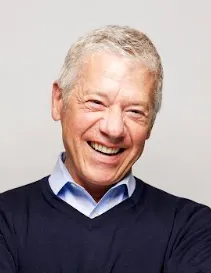
Are you evaluating other conversion opportunities?
We turned to some of our other existing properties on the heels of the pandemic, with the admittedly uncertain times in the future for office leasing and development and looked for other similar opportunities. Do we have other buildings that are suitable physically in terms of location and in terms of handling our existing vacancy that are suitable for conversion to residential? At this point, we've identified three and are moving forward with development.
What are the characteristics that buildings need to have to be candidates for conversion?
There are physical characteristics like the size of the floor plates, the distance between the glass on the exterior of the building and the core — the elevators and stairs — on the interior of the building. If that's too deep, you get an apartment that has dark space. There are code issues.
You can't use that area [on the interior of the building] as the bedroom because the bedroom requires access to natural light and ventilation. The floor plates of the buildings are one physical component. The spacing of the columns inside the building is another because 24-by-24 feet is an ideal column spacing for apartments.
Does building age matter in conversions?
Current office buildings typically have larger, deeper floor plates than what I just described. So newer office buildings don't necessarily lend themselves well to conversions. Older buildings do and we have built a number of buildings in our portfolio that date to the 1970s and 1980s. Those tend to be ideal for apartment conversion.
I’m assuming location also plays a big role in your thought process.
Location is absolutely key as always. The Curtis is at a jumping-off point in the market. In Center City Philadelphia, everything you could possibly want is at your doorstep — restaurants, nightlife and shopping. We look for that type of amenitized location when we think about converting office buildings into apartments.
As an example, a property in the Miami Metro that we're currently working on converting is part of an office campus. But it's adjacent to the Dadeland Mall, which is similar to the King of Prussia Mall — a very high-end, very successful mall.
There is also existing workplaces and existing older for-rent housing in the area. So there is a big residential base, big employment center and big retail base. There is also retail that supports the existing residential tenants. So there is a Publix and a Trader Joe's in the area, along with other retail. It also has a Metrorail station that runs directly to downtown Miami.
Click here to sign up to receive multifamily and apartment news like this article in your inbox every weekday.


